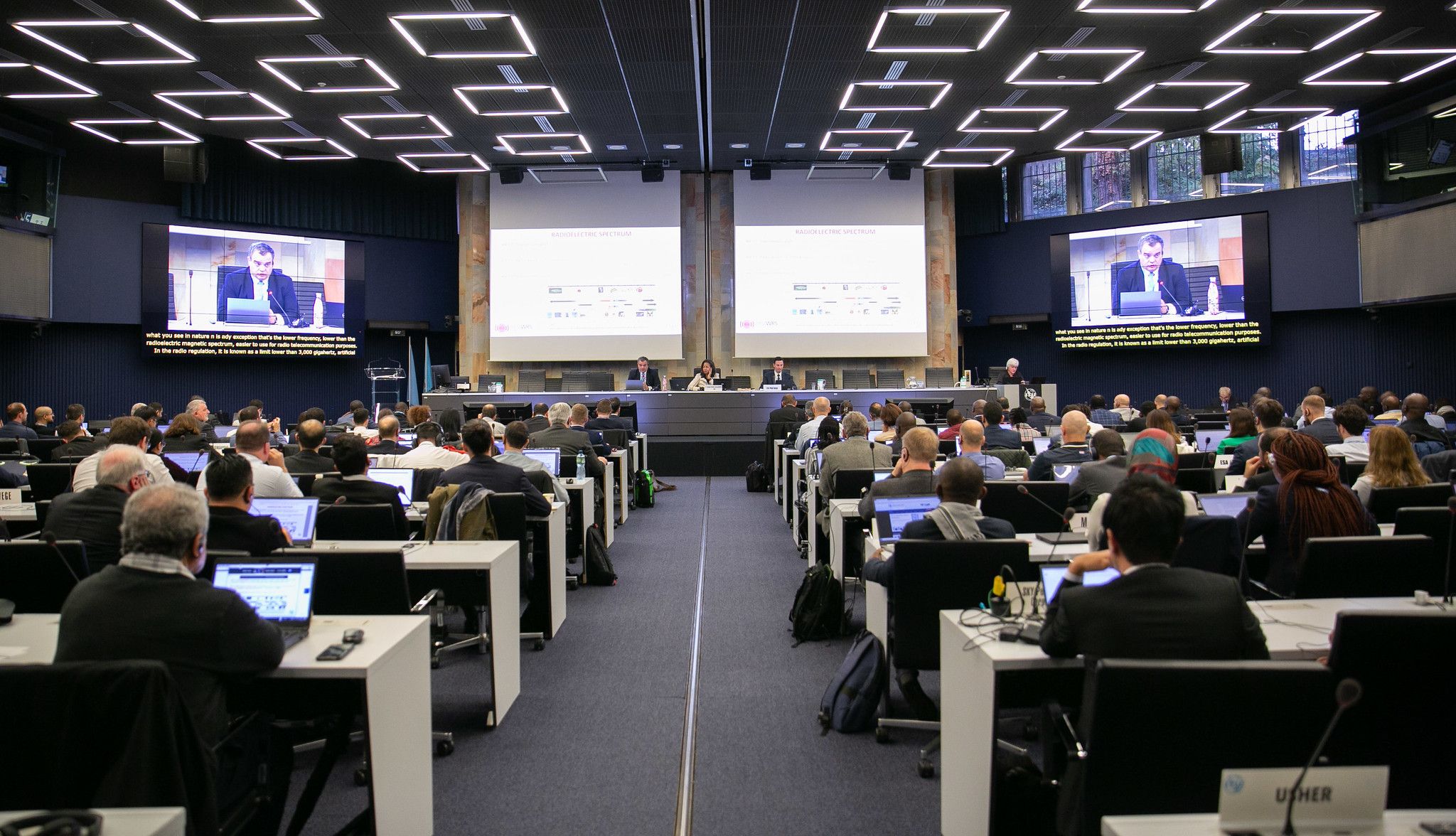
WRS-22: New tools to help navigate and apply the Radio Regulations
By ITU News
During the World Radiocommunication Seminar (WRS) held at International Telecommunication Union (ITU) headquarters last month, all roads of inquiry led back to the Radio Regulations.
These internationally agreed rules – in force for 116 years and counting – comprise the only globally-binding treaty governing the use of radio-frequency spectrum and satellite orbits.
Known to experts as the “Radio Regs” or RR, the regulations govern the use of the radioelectric part of the electromagnetic spectrum, meaning frequencies below 3,000 gigahertz (GHz).
Currently, the RR allocate the frequencies between 8.3 kilohertz (kHz) and 275 GHz, enabling countries around the world to coordinate and harmonize their spectrum use for various terrestrial and space-based radiocommunication services (e.g., broadcasting satellite services) as well as for safety communications and other vital applications.
Radio waves propagate freely, meaning they travel in space and through matter without any artificial guide, explained Joaquin Restrepo, Capacity Building Coordinator in ITU’s Radiocommunication Bureau.

Coming to terms
Understanding the RR fully requires knowing the difference between stations and services. A ‘radio station’ consists of any combination of transmitters and receivers that can carry out a radiocommunication service, which in turn refers to the transmission, emission, or reception of radio waves for telecommunication purposes.
“The Radio Regulations are also technologically neutral,” he pointed out, clarifying how they allocate frequency bands to different radiocommunication services – like maritime communications, for example – but not to specific applications, particular technologies, or defined user profiles such as private companies or governments.
While the RR provide the ultimate tool for frequency allocation, the assignment of frequencies is typically the prerogative of sovereign governments, through their respective National Frequency Plans.
Navigating the RR
The RR comprise over 2,000 pages in four thick volumes – at least in their printed form.
Even in their digital format, the Radio Regs are inherently intricate and contain enormous amounts of cross-referenced data, making the search for technical and regulatory information a complex endeavour even for frequency coordination specialists.
Bachar Abou Chanab, ITU’s Head of Terrestrial Applications Software Division, demonstrated two updated software tools designed to help spectrum experts analyse the Radio Regulations and its Table of Frequency Allocations (TFA) in a more convenient way.
These standalone applications, requiring no Internet connection, enable the user to search the TFA and associated footnotes as they appear in the Article 5 of Radio Regulations, as well as related texts such as ITU Radiocommunication Sector (ITU-R) Resolutions and Recommendations, as well as the Rules of Procedure.
“This is much more than a PDF navigator,” said Abou Chanab, highlighting the software’s internal cross-referencing mechanisms and customization features. “It’s the perfect companion to the 2020 edition of the Radio Regulations that incorporates the decisions of the 2019 World Radiocommunication Conference.”
The next major release of the software will follow the next revision of the Radio Regulations that will be undertaken by the World Radiocommunication Conference (WRC-23), set to take place in Dubai, UAE, from 20 November to 15 December 2023.
Learn more about the Table of Frequency Allocations software and RR Navigation Tool.
Eliminating harmful interference
The Radio Regulations exist so that frequencies and any associated orbits –limited natural resources – can be used rationally, efficiently, and economically so that countries or groups of countries may have equitable access to those orbits and frequencies, considering the special needs of the developing countries and the geographical situation of particular countries.
Their goal is to guarantee the operation of radio stations free of harmful interference.
According to the Radio Regs, interference is defined as harmful if it impedes a radio navigation or other safety service, or if it degrades, obstructs, or interrupts a radiocommunication service operating in line with the RR.
Most international cases of harmful interference are resolved directly between the involved governments or operators. But when bilateral efforts fail, the concerned administration can request help from ITU’s Radiocommunication Bureau (BR).
At that point, the government raising the issue needs to share many different parameters for the interfering signal, including source location, date, time, frequency, bandwidth, emission class, measured field strength and power flux density.
“Until now, the ITU BR received the information concerning terrestrial services by e-mail, fax and even post – but difficulties with delays made a web-based platform necessary,” said Saman Jalayerian, Head of Registration section in ITU’s Terrestrial Services Department.
Jalayerian went on to present Harmful Interference to Terrestrial Services (HITS) – a new software tool designed to consolidate harmful interference reports while helping ITU to share information efficiently and transparently with all administrations involved in a case.
The web-based system will enable authorized government users to consult archives of communications exchanged between BR and other administrations; to submit reports; and to provide supplementary information – from maps to log files to measurement results – in various formats.
According to Jalayerian, 107 administrations – or more than half of ITU’s 193 Member States – have been involved in cases of harmful interference, as affected or affecting, since 2005.
While HITS is currently at the prototype stage, a beta version is scheduled for testing by selected administrations in late 2023.
A similar web tool for collecting information concerning interference to satellite communications, the Satellite Interference Reporting and Resolution System (SIRRS), is already operational in the Space Service Department of the Radiocommunication Bureau.
This special ITU News blog series features content from the 30th World Radiocommunication Seminar, including a closer look at the latest trends in broadcasting, international mobile technologies, maritime communications, space and terrestrial services, and more.
The series will conclude a preview of the World Radiocommunication Conference (WRC-23), set to take place in Dubai from 20 November to 15 December 2023.
Image credit: ITU/ M. Jacobson-Gonzalez
